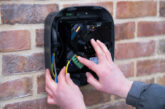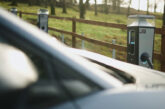
With the increase in Electric Vehicle (EV) uptake, the Institution of Engineering and Technology (IET) is calling for a standardised approach for EV charging equipment dealing with faults on the public low voltage electrical distribution network.
The IET has published a new standard to tackle this, known as Open combined protective and neutral (PEN) conductor detection devices (OPDDs), IET 01:2024. It outlines to manufacturers, specifiers, designers and installers the protection mechanisms for EV charging equipment in case faults occur – such as dangerous voltages on metalwork which could present a risk of shock – known as an open ‘PEN’ fault.
The new standard also equips installers with the knowledge needed to choose the right chargepoint for the right circumstances and with considerations towards differing external and environmental influences that may be faced at the chosen point of installation. The aim is to make it easier for designers and electrical installers to choose a suitable product to meet individual circumstances and requirements. This provides efficiencies for installers and will improve safety for operators and users of EV charging equipment, as well as members of the public.
Current regulations require EV charging equipment to cease charging and completely isolate the vehicle from the charging equipment when a particular fault occurs on the supply cable out in the street. Most manufacturers of EV charging equipment provide this functionality but not all of them do it in the same way. This causes confusion when choosing the most suitable equipment and approach to installation. IET 01 seeks to provide a standard way for EV charging equipment to operate with these considerations in mind.
Mark Coles, Head of Technical Regulations at the IET said: “Embracing the EV transition means that both electric cars and the required vehicle charge points have become commonplace both on-street and outside homes. The positioning of EV charging equipment presents challenges to the designer and installer and must be supported by requirements and methods of operation that ensure the safety of EV equipment and users. To meet the UK government’s targets for net zero, many, many more chargepoints need to be installed. The challenges faced by installers are not going away and, with the demand for more power to charge EVs, the risk of lost PEN incidents is increasing.
“IET 01 has been developed over the course of several years by consensus of a technical committee comprising stakeholders from across industry and facilitated by the IET as part of our commitment to the advancement of engineering excellence. IET 01 is not a static document and will be continually developed through consensus and in response to public feedback and consultation. It is the IET’s ambition for IET 01 to be adopted by those working with EV systems and installations, and to be considered by the relevant regulatory committees.”
IET 01 complements the IET’s Code of Practice for Electric Vehicle Charging Equipment Installation, 5th Edition which is available from the IET Bookshop: The IET Shop – Code of Practice for Electric Vehicle Charging Equipment Installation, 5th Edition.
For more information about IET 01, please visit theiet.org/iet-01.
Find more of the latest industry news here








